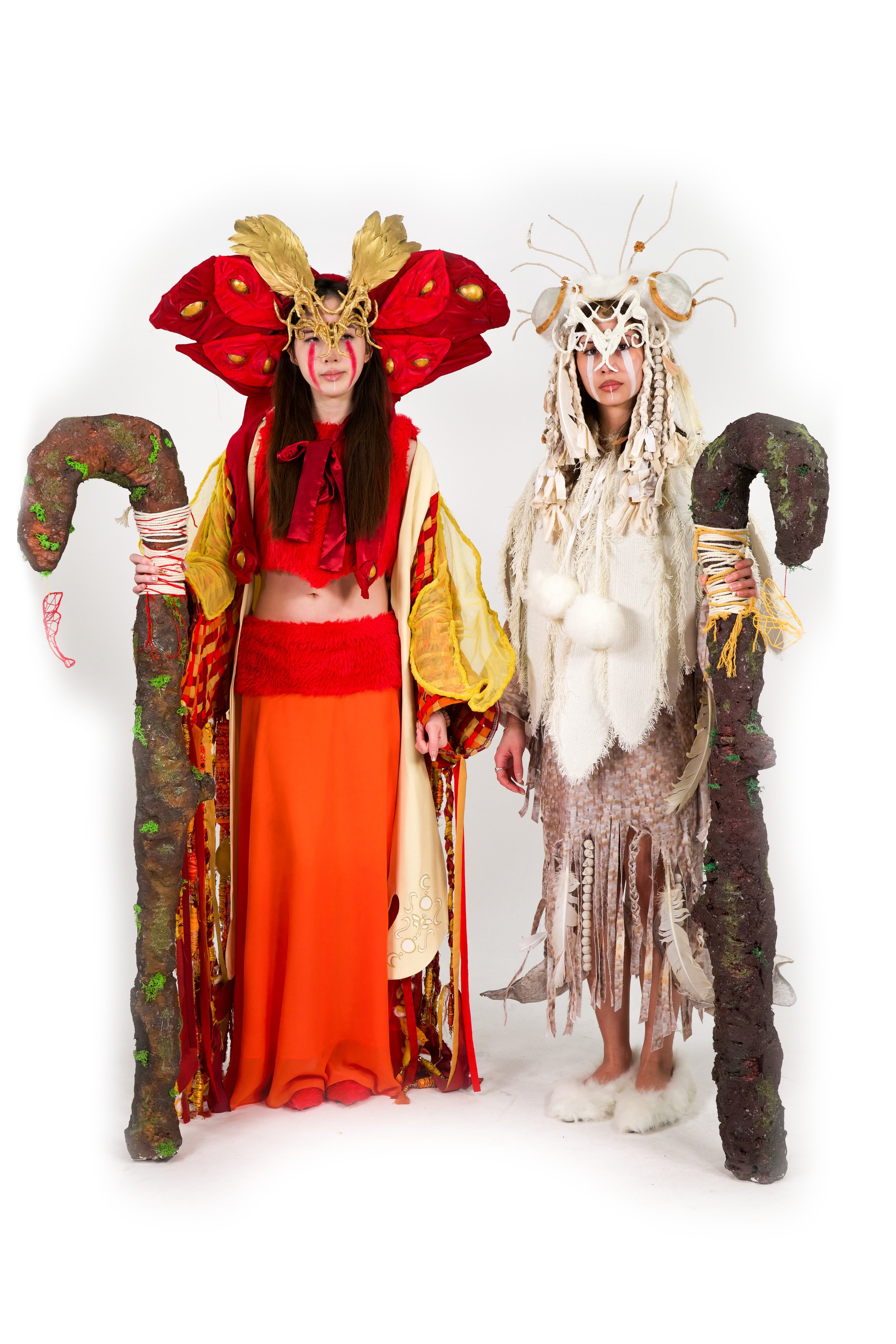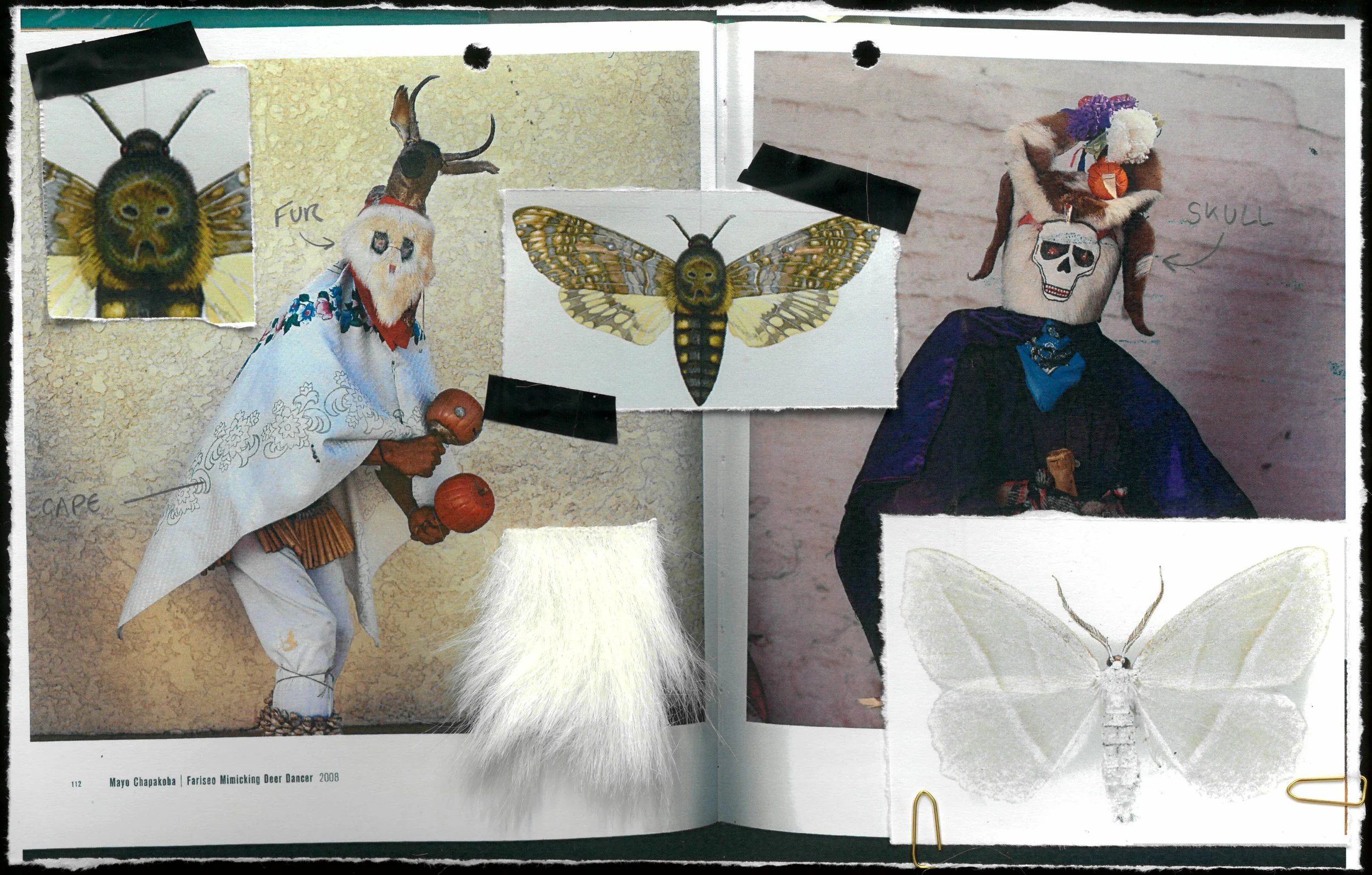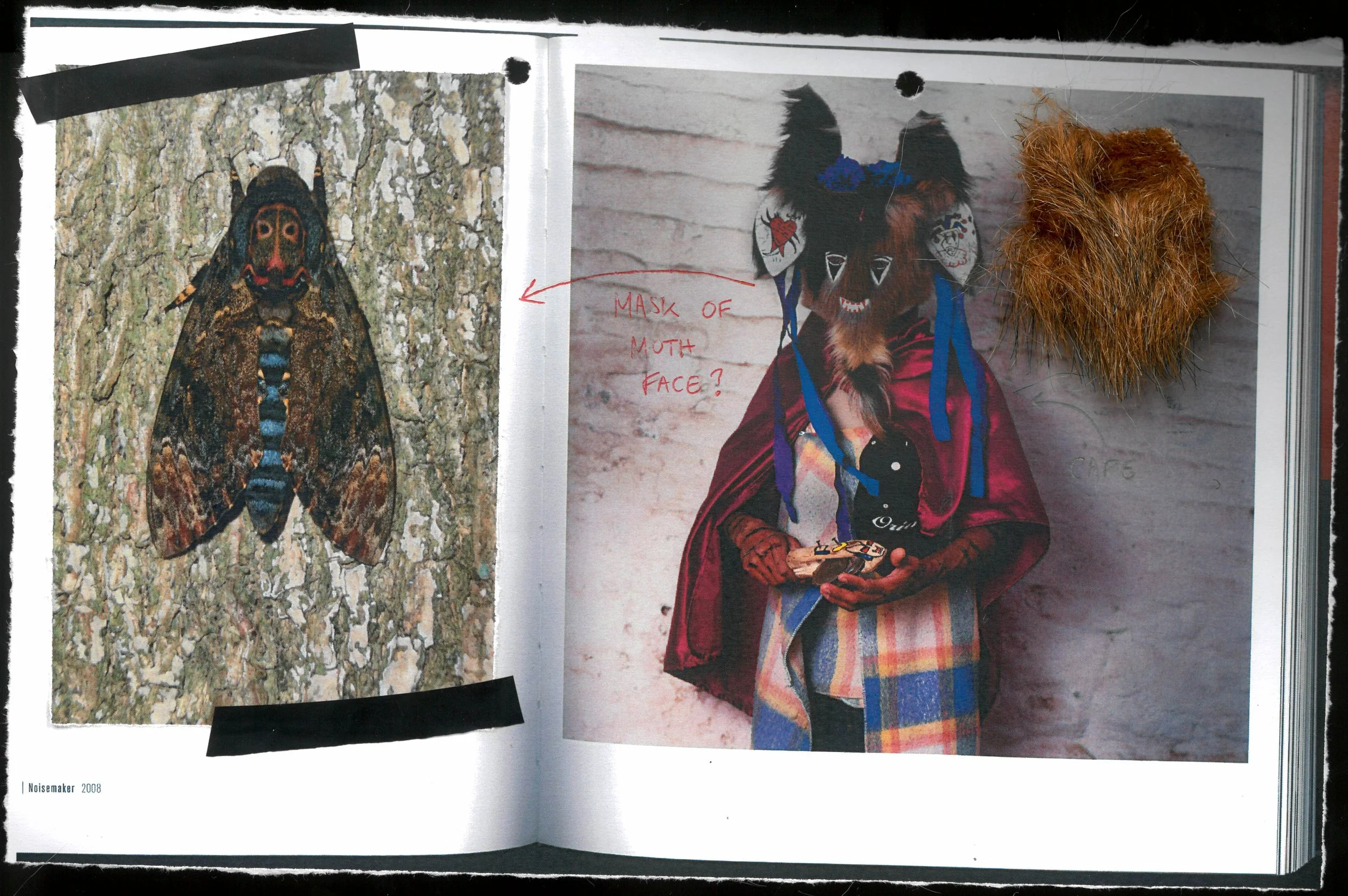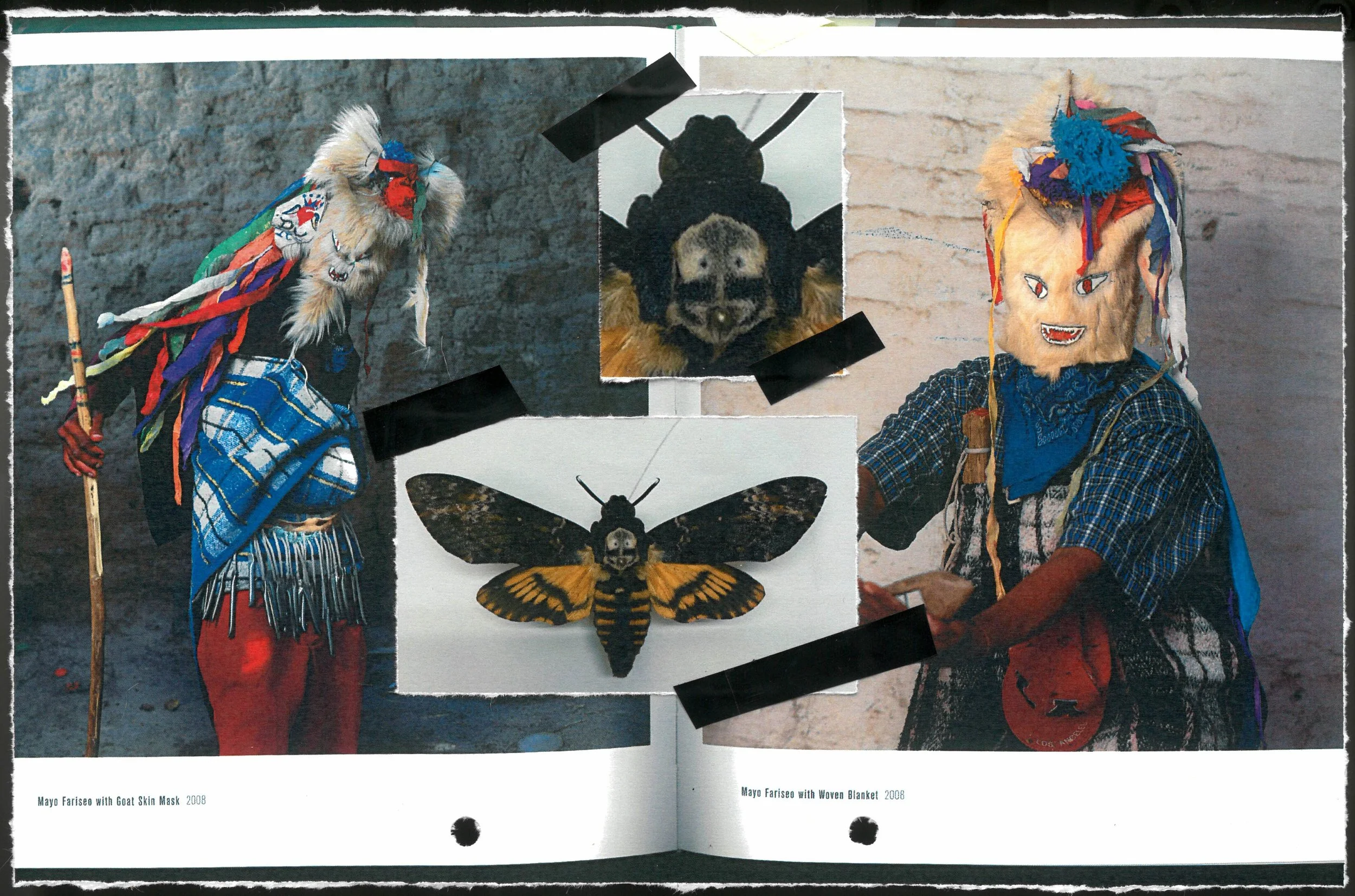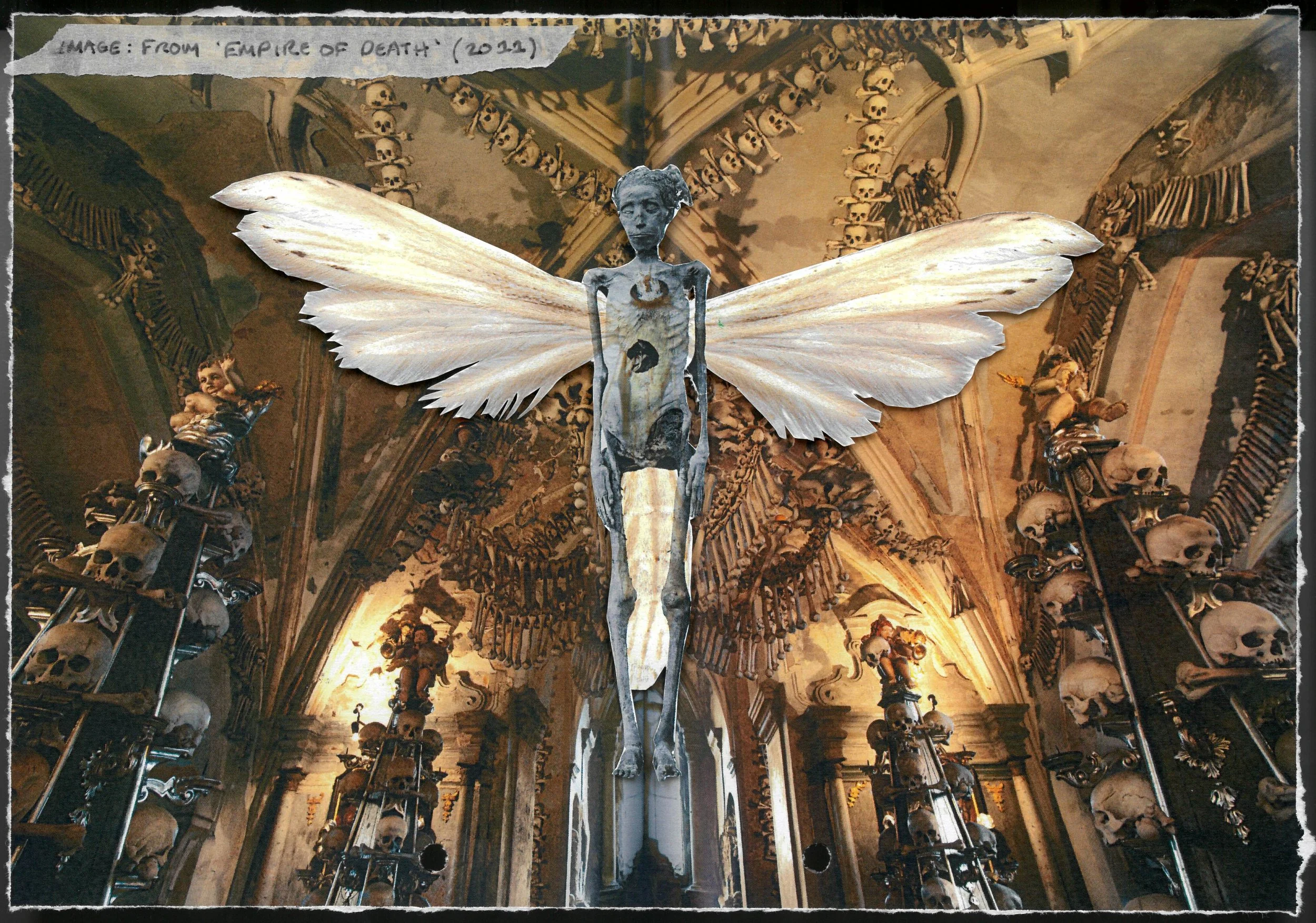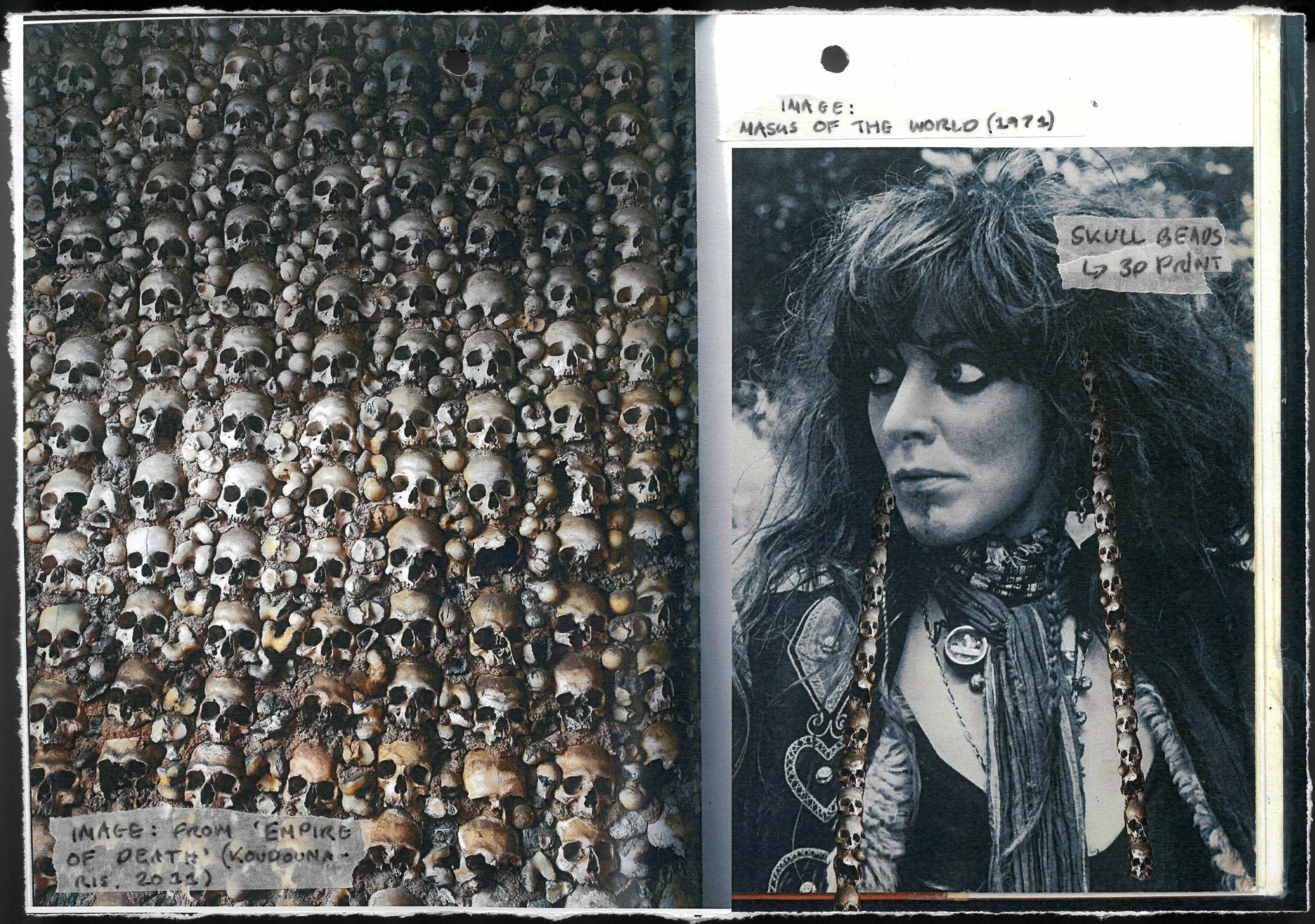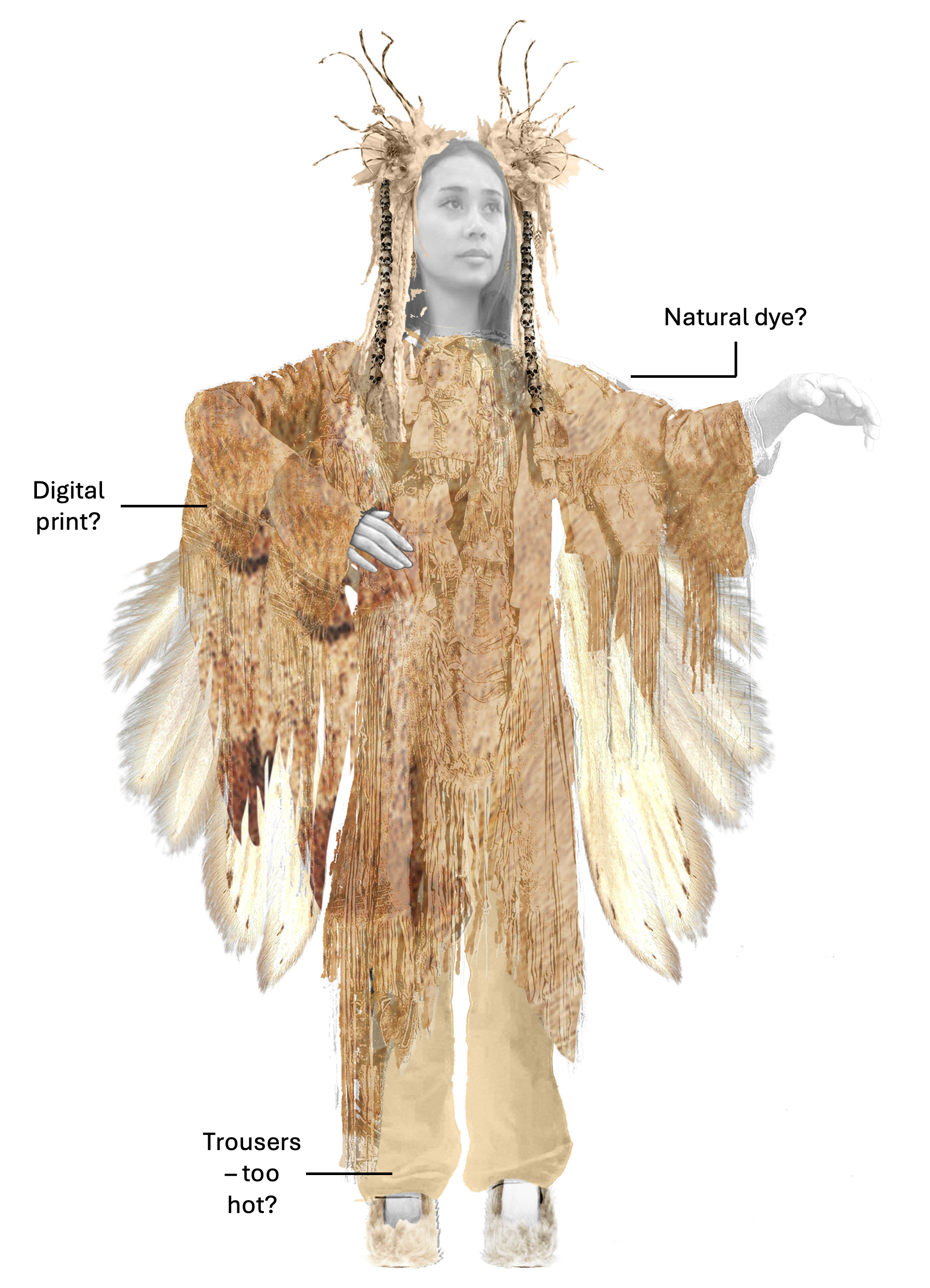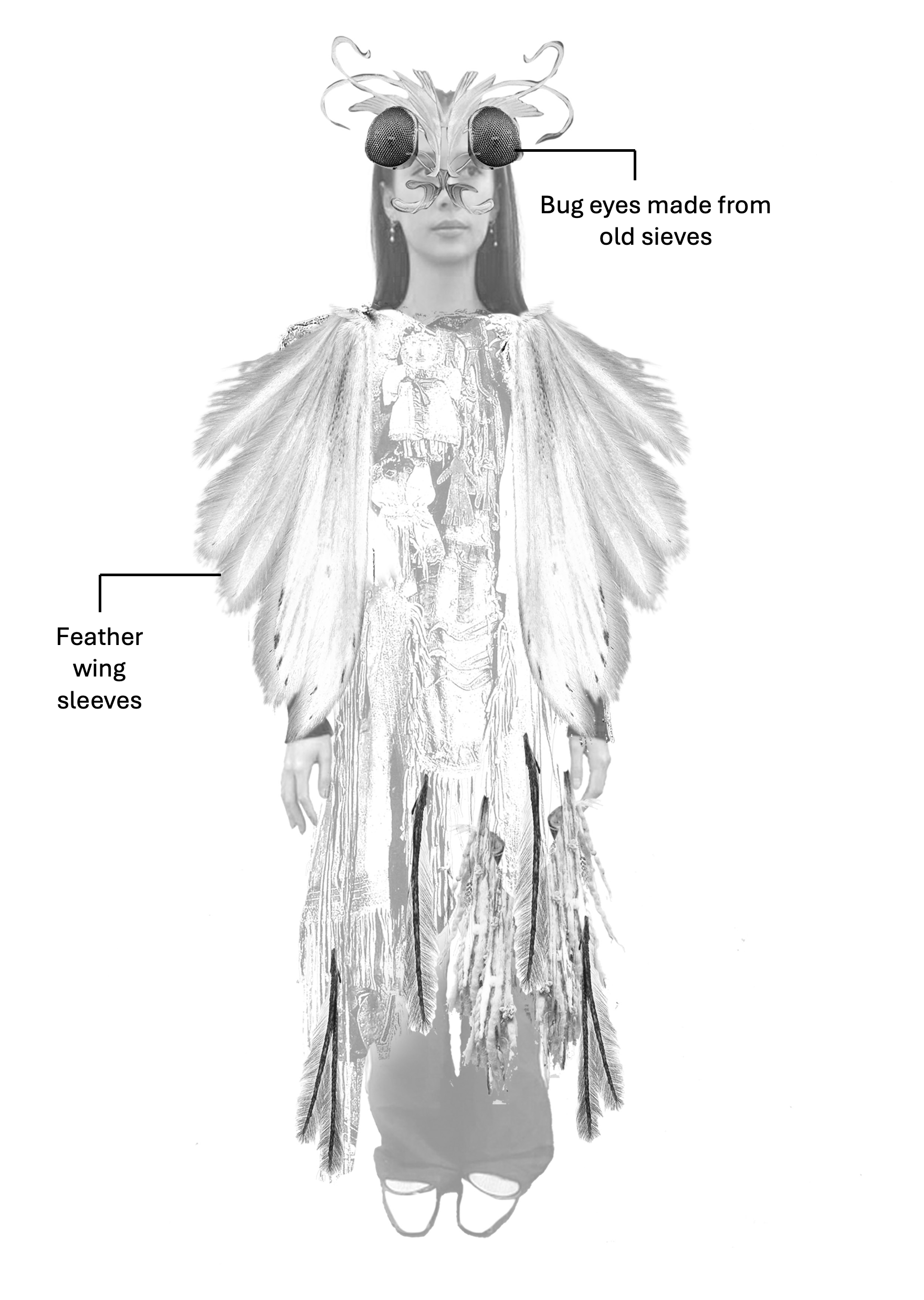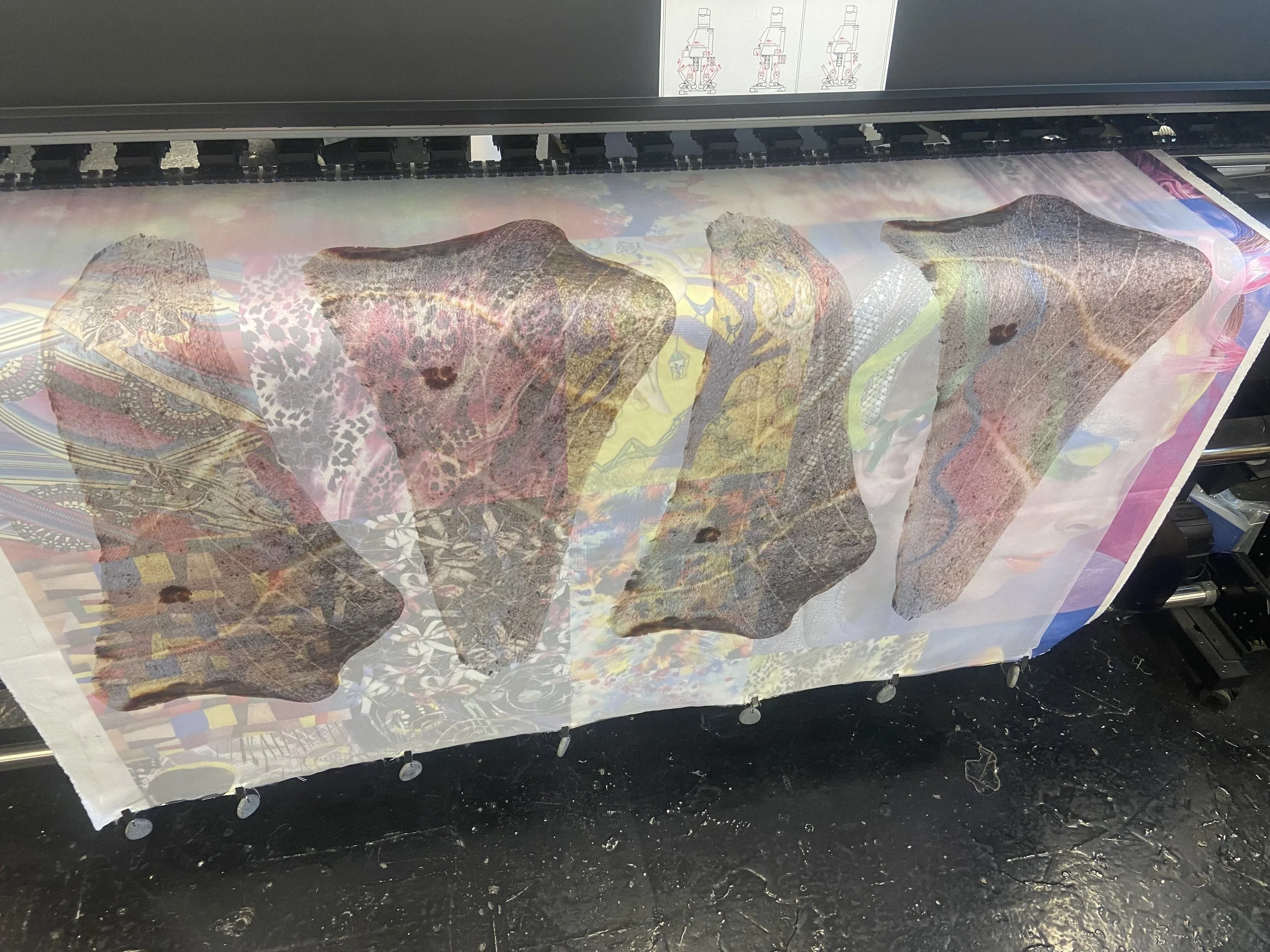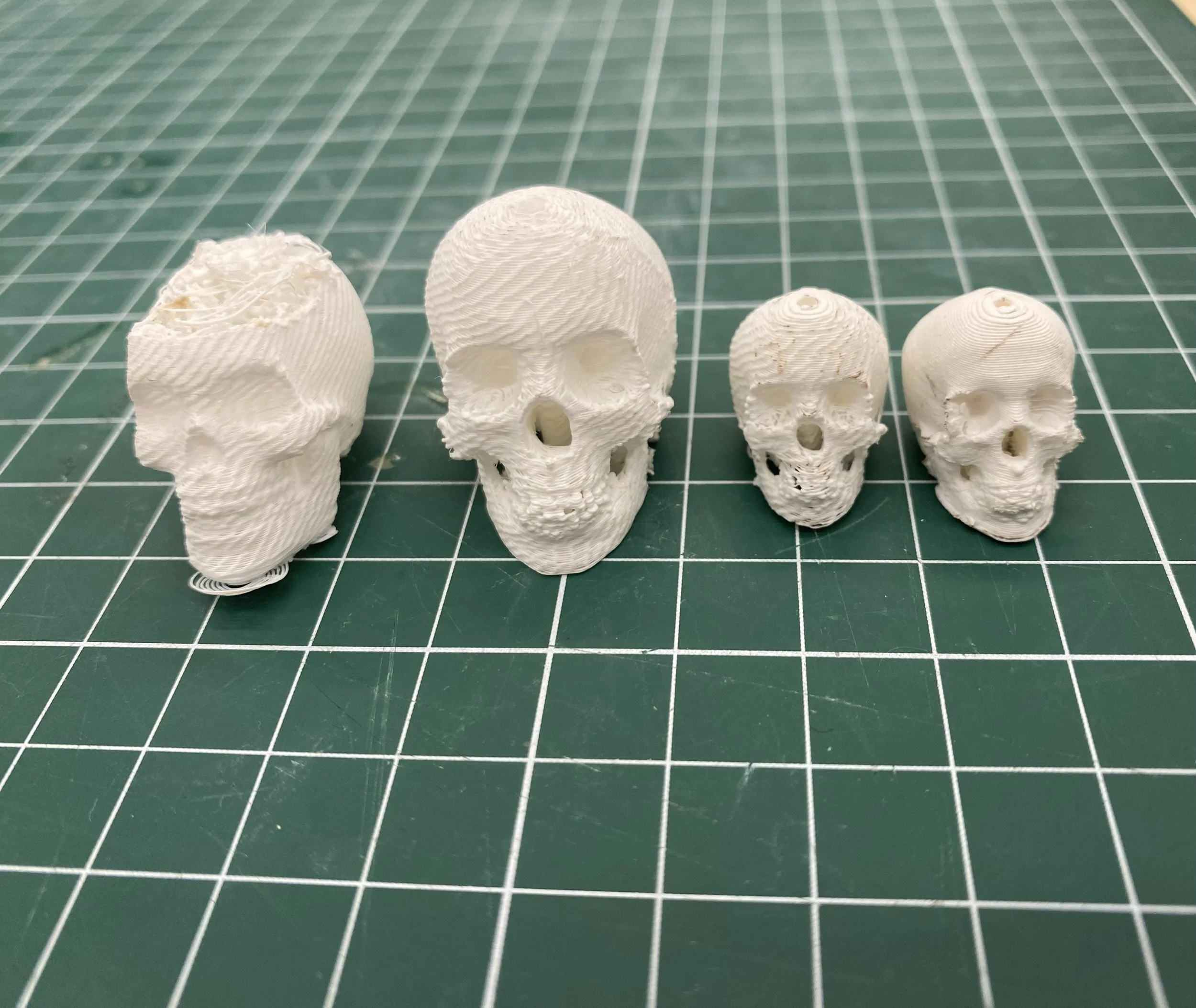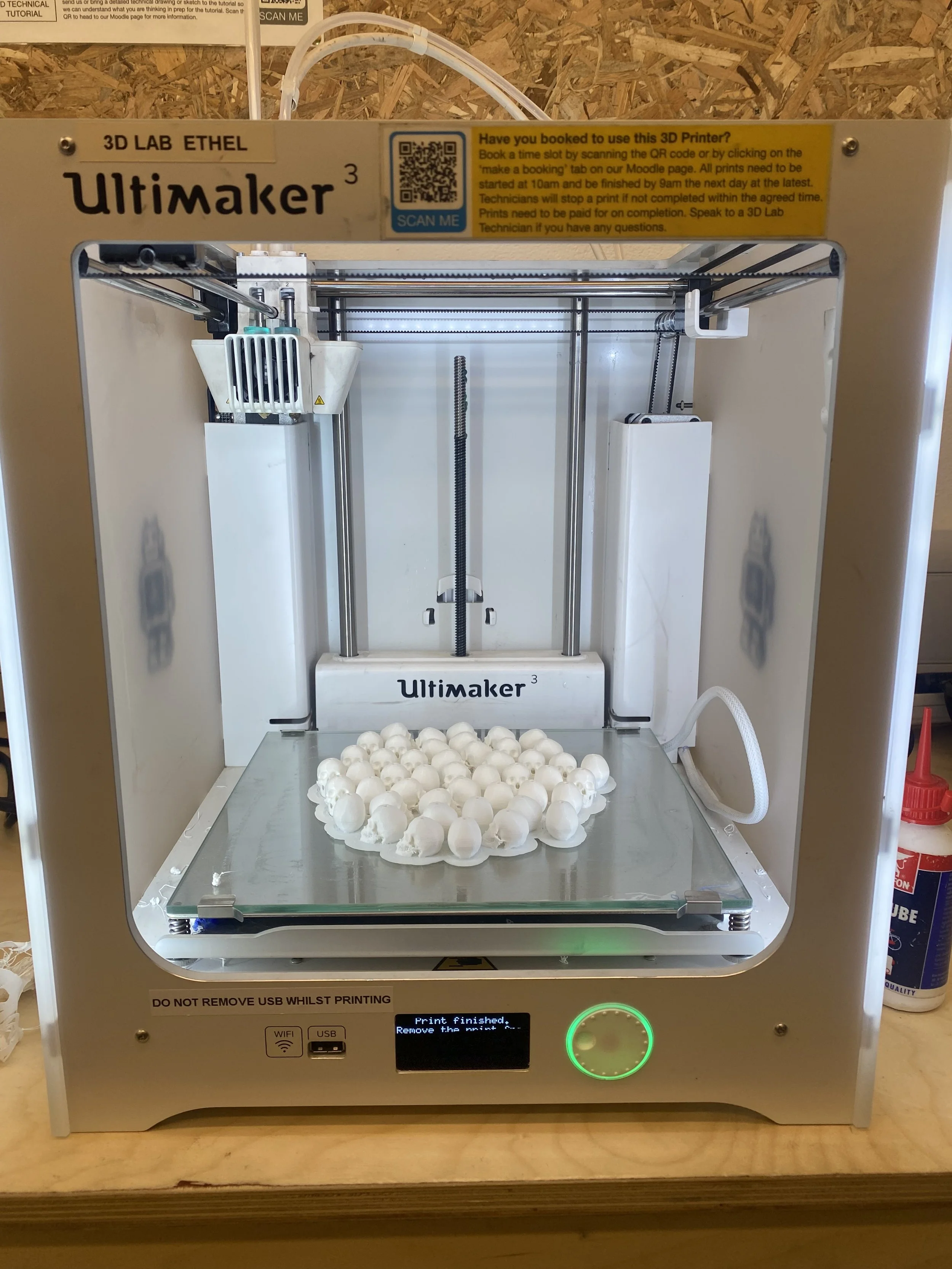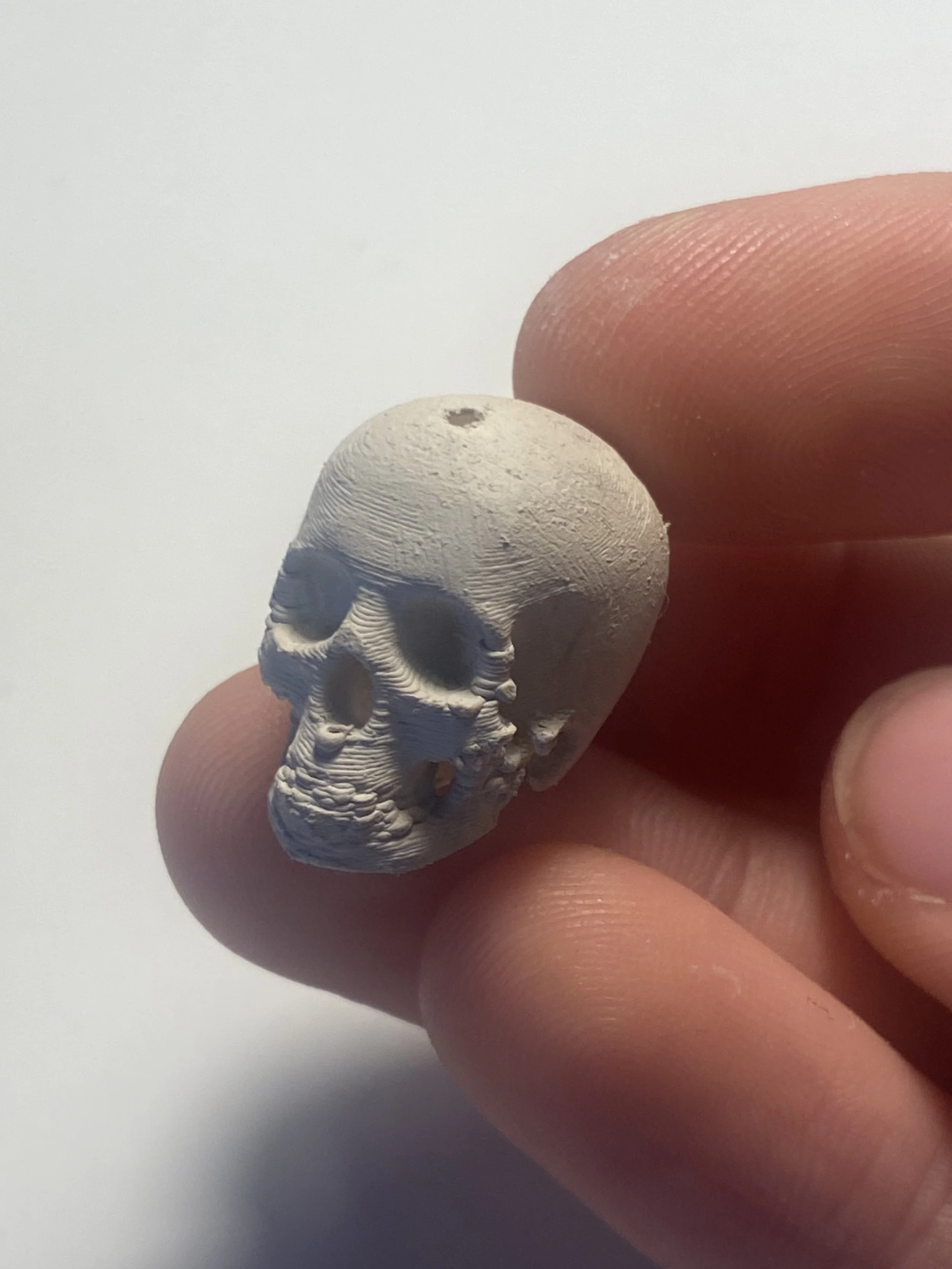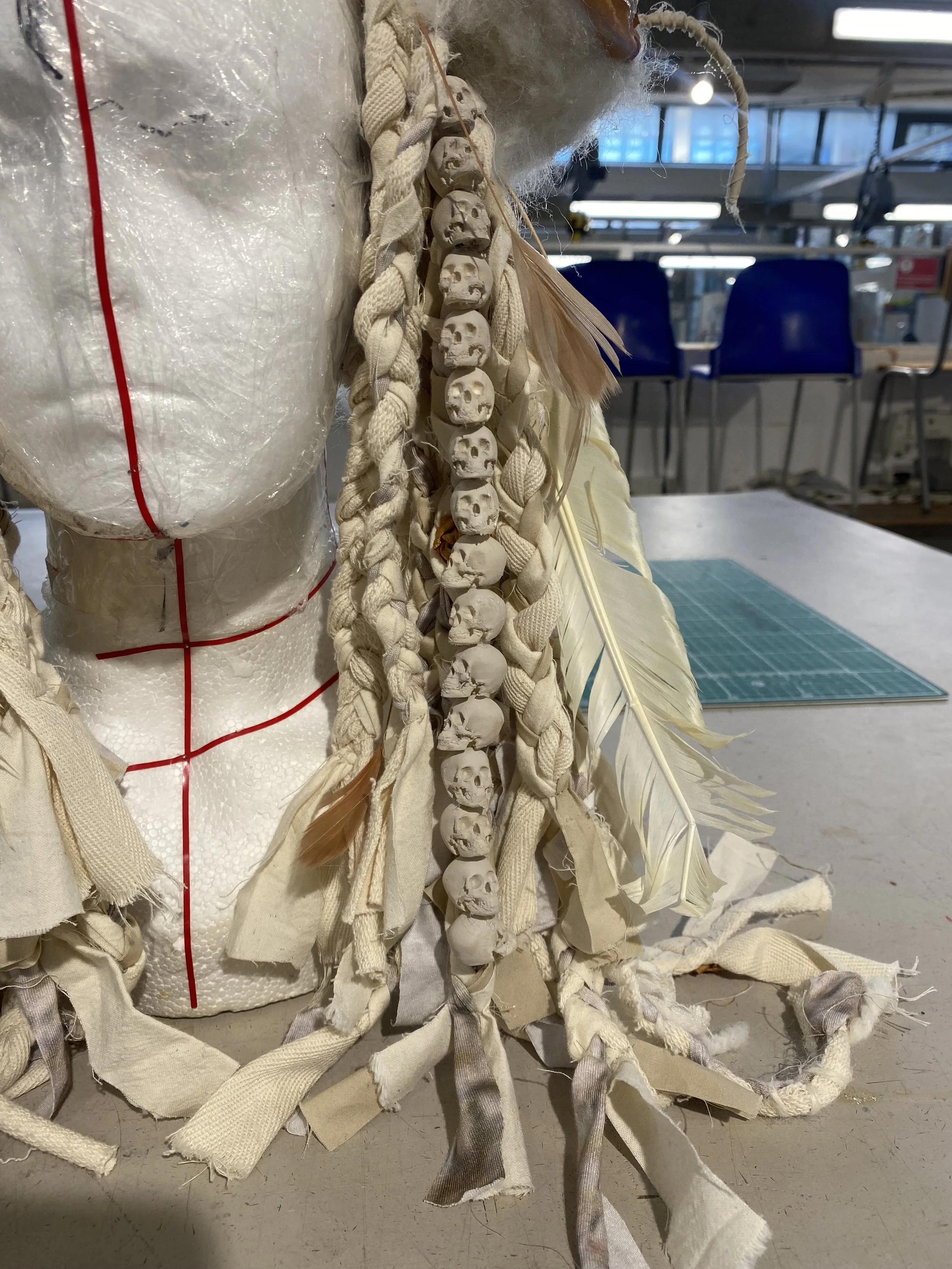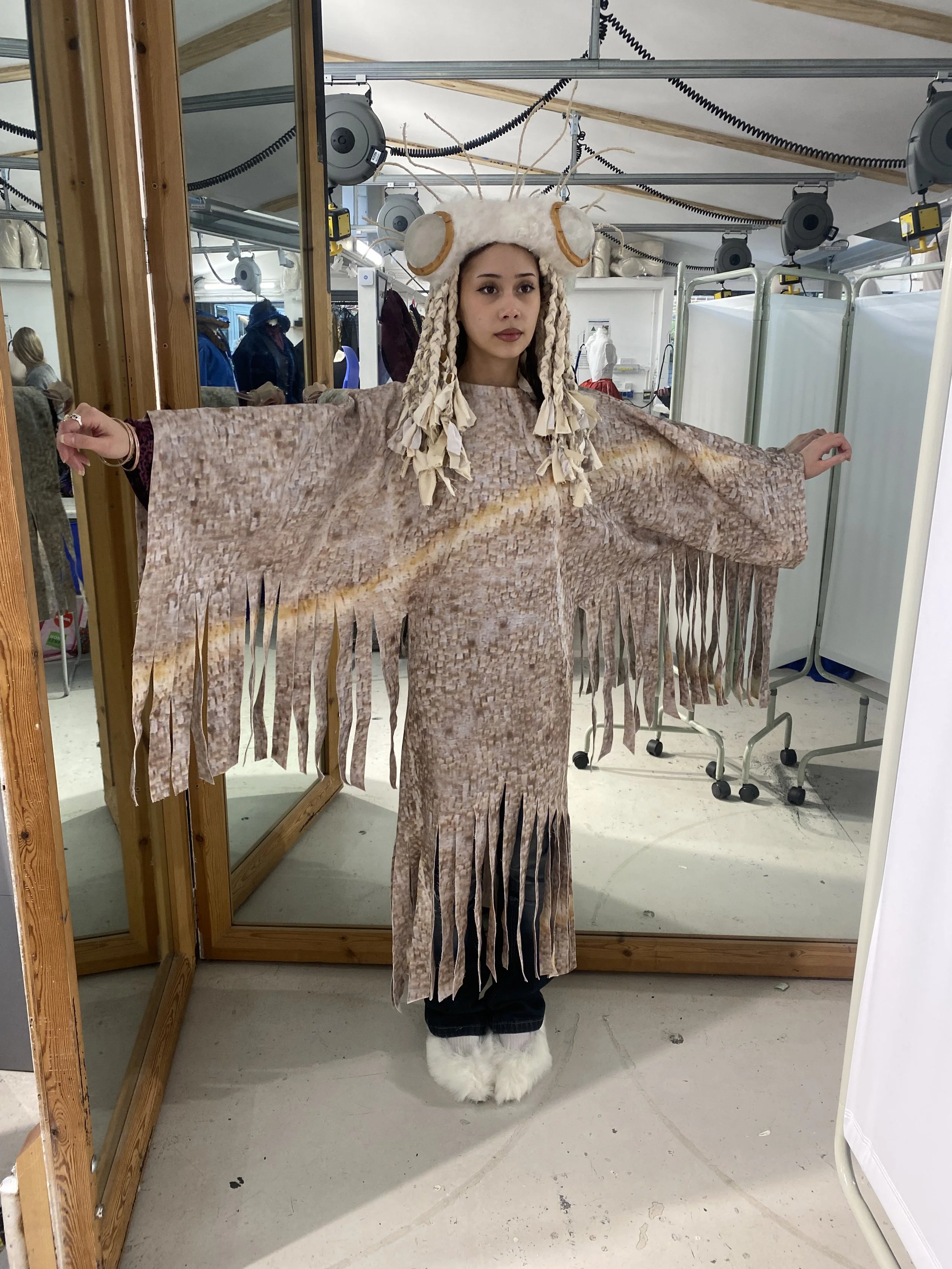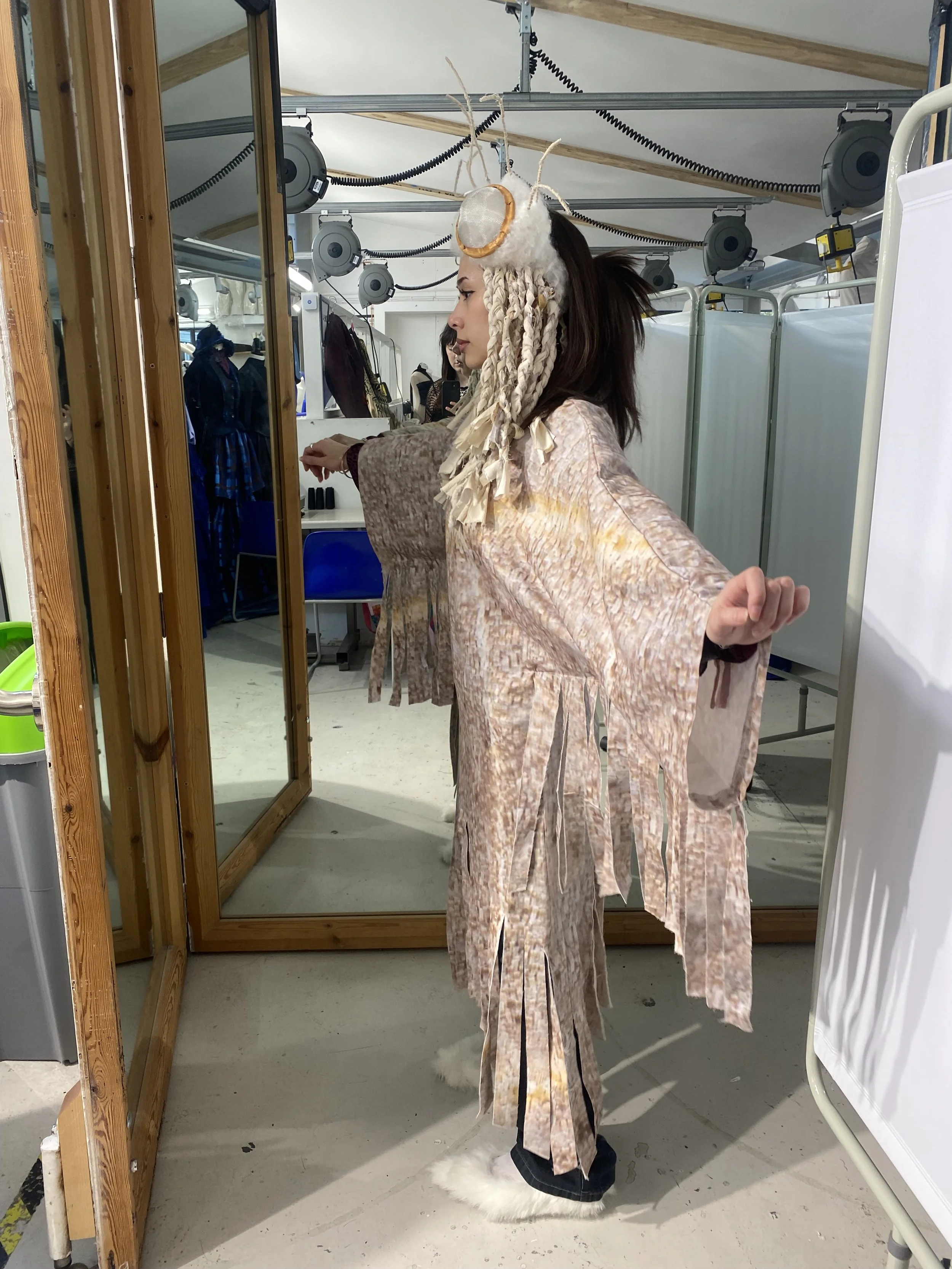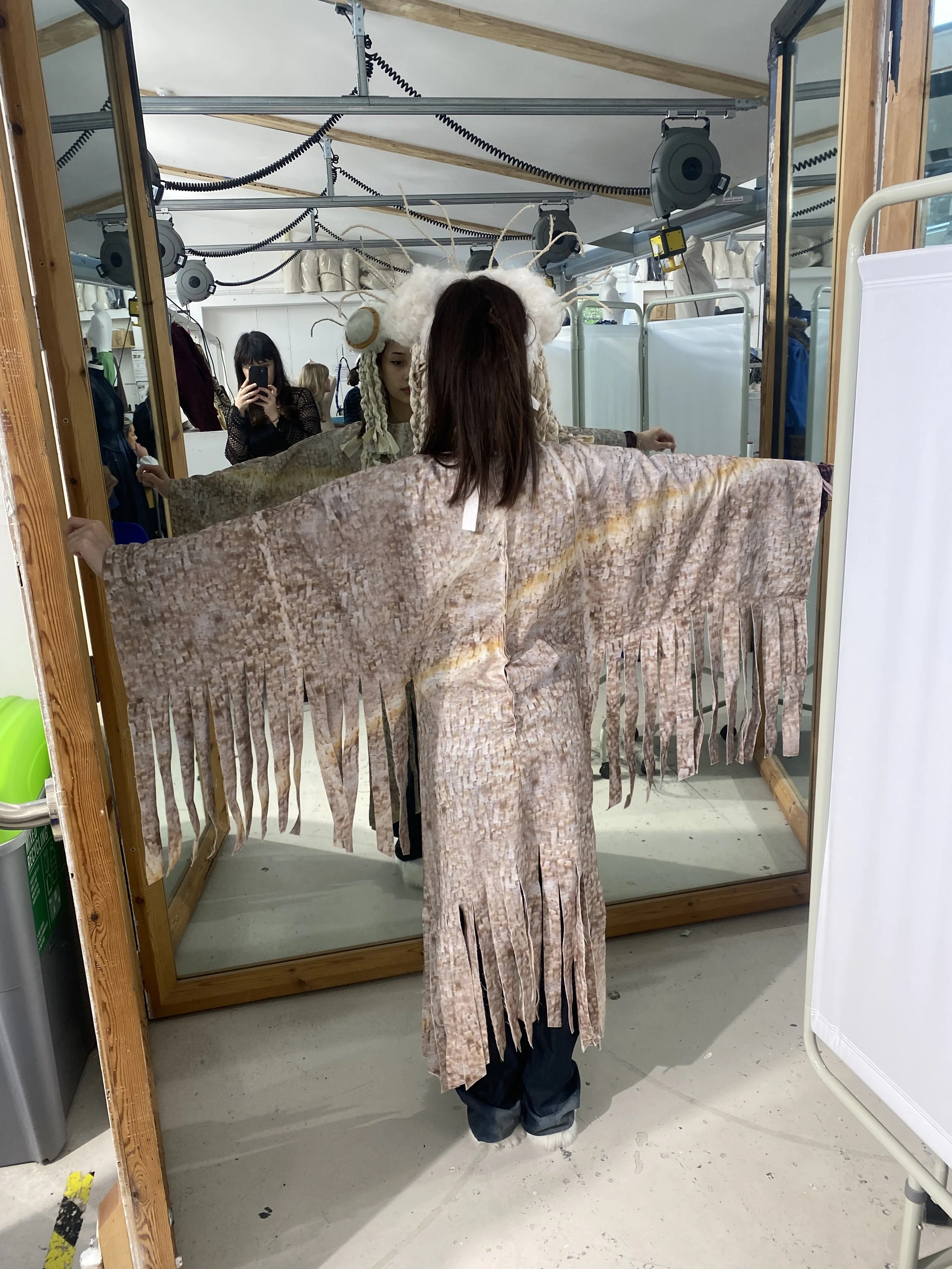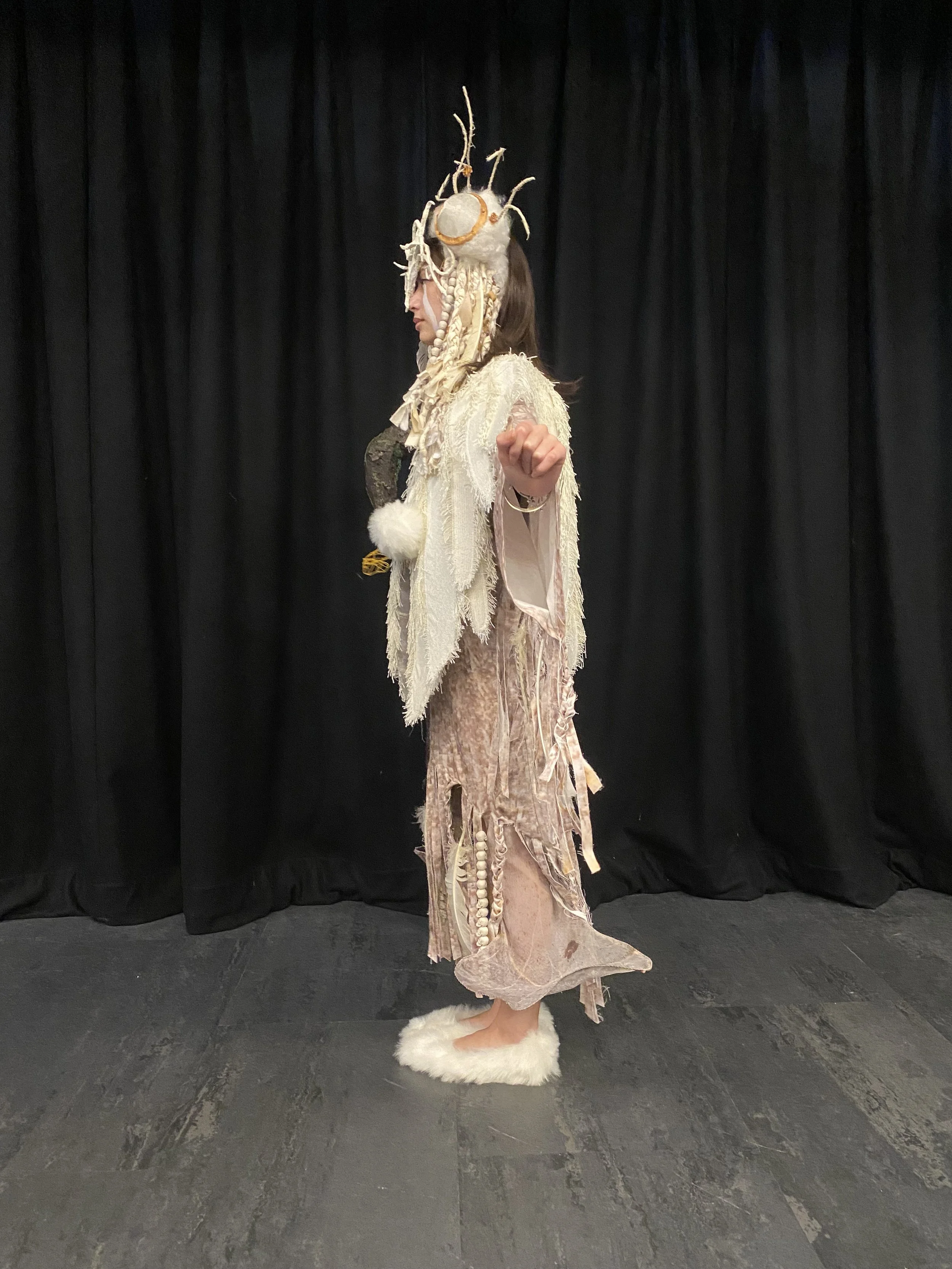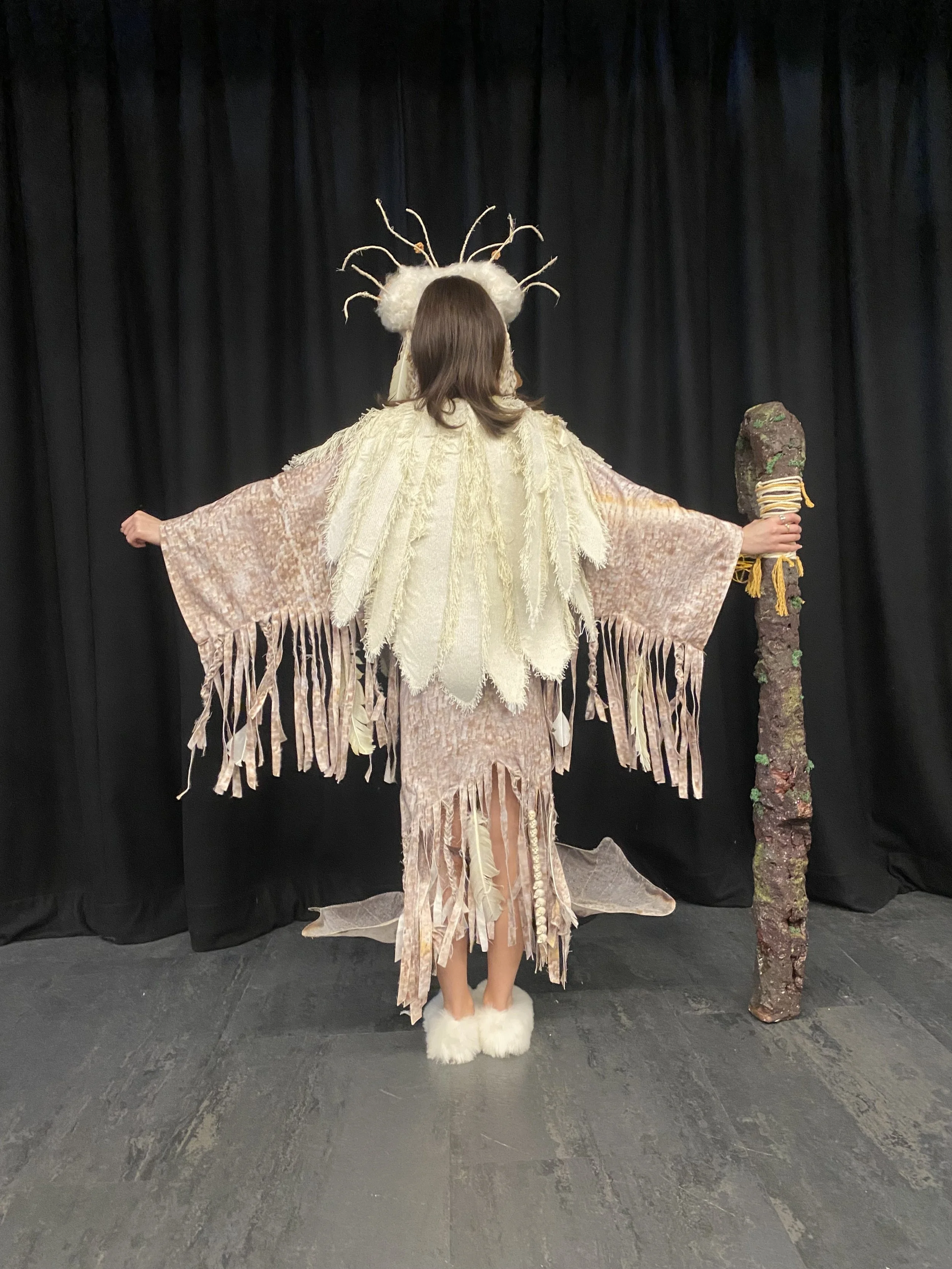Boomtown
This exciting collaborative project involved designing and creating costumes for actors to attend Boomtown Festival 2025. I focused on the 'Botanica' district, developing a costume that embodied its themes of nature, mythology, and transformation.
world board
The Oracle, intoxicated by sulfuric gas, experiences vivid hallucinations and delusions, leading her to believe she is a true messiah.
Her devoted followers are drawn into her prophecy, blindly trusting her visions.
Beneath Boomtown, Iona—the vast mycelium network—silently connects all life, spreading heightened consciousness, shaping the unseen forces that guide the city’s fate.
Embedding our concept
Research by teammate Maisy, who previously worked in Botanica at Boomtown, which helped us integrate our concept into The festival’s narrative.
Research driven by Phyliss Galembo and honouring Indigenous traditions
I drew significant inspiration from photographer Phyllis Galembo's book Mexico: masks, Rituals which documents the vibrant costumes and rituals of Indigenous Mexican communities. The inherently DIY practice and use of accessible materials in these traditional costumes resonated with Boomtown's culture, in which participants often craft their own costumes, purposefully using sustainable materials. Galembo’s work explores how Indigenous Mexican festivals integrate natural materials like fur and feathers to symbolise connections to spirituality and nature.
Through Galembo’s work, I also investigated how modern western festivals may be influenced by the rituals and celebrations of Indigenous cultures. Boomtown’s creative director, Luke Mitchell, explained that the festival aimed to transform people to a utopian society whileconnecting us back to ancient ceremonies. This draws parallels with how ritual is defined in the book’s introduction written by Sergio Rodriguez-Blanco: “ritual object and corporal body become one, and catapult to a dimension beyond time or history.” Both reject overconsumption in modern ritual and celebration, as Rodriguez-Blanco explains: “Cultural artifacts […] have been emptied from their ritual origin by the reification of mass culture. Man no longer partakes but consumes. A consumerist society tends to de-ritualise and exoticize any object: stripping it of its original meaning.”
In our project, we aimed to honour Indigenous traditions by focusing on the universal themes of nature and transformation, central to both Indigenous rituals, Boomtown’s ethos and the Botanica narrative. It was crucial to approach these inspirations with cultural sensitivity and to engage in deep research as Indigenous attire and rituals are deeply rooted in specific cultural and spiritual contexts. Appropriating these elements without understanding their significance could perpetuate social and racial injustices. We consulted Marie, who has Canadian Indigenous roots, and she emphasised the importance of avoiding direct imitation—such as replicating sacred feather headdresses.
This experience reinforced the importance of researching and respecting the cultural origins of our inspirations. It also encouraged me to think deeper about sustainable practice, considering how resourcefulness and environmental consciousness are integral to rituals that celebrate nature and spirituality.
SKETCHBOOk
character board
STYLE BOARD
DESIGN ITERATIONS
FINAL DESIGN
Placing my design in the festival scene
see my process:
Digital Fabric Printing
3D Printing
Fittings
FINAL IMAGES
The White Spirit of Death Moth.
I collaborated with other makers to pattern cut and contract the tunic, but printed and embellished it myself. I also fully crafted the headpiece, shoes and cape. The staff and mask is made by tech arts collaborators Jay Wilson and Maisy Wynne. I also worked alongside Amelia Brooks (the red moth designer) to create symbolic contrasts between the characters.
I was sustainable as possible during this project, using scrap and second-hand fabrics, old sieves, used shoes and cotton fabrics.





